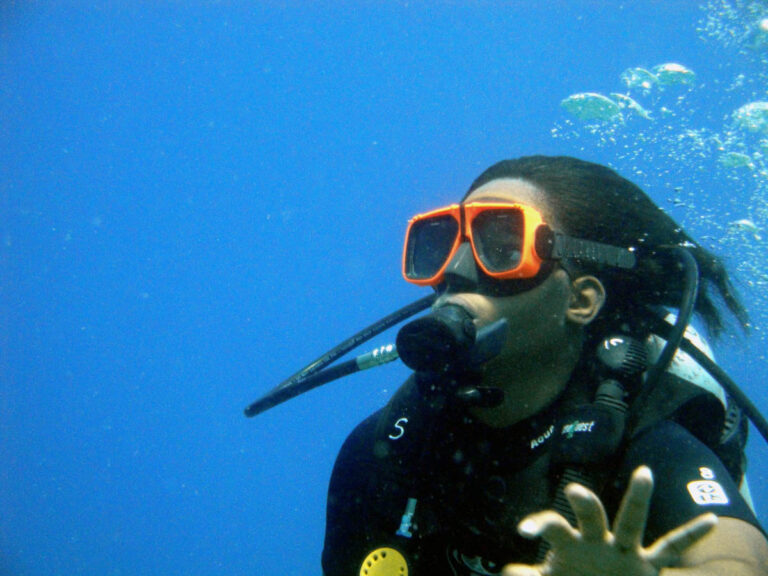Inland Travels
My latest dive travel to the islands gave me time to re-look at the Try Dive experience that tourists were taking part in andwhat benefit the dive industry is getting if any.
Learning to scuba dive can fall into several categories, depending on the context and the individual’s motivations. Among these categories, one of the most popular entry points is the “Try Dive” or “Discover Scuba” experience, which introduces new divers to the underwater world.
Here are some common categories into which scuba diving may fit:
- Recreational Sport: For most, scuba diving is primarily viewed as a recreational sport that offers adventure, enjoyment, and a sense of exploration—like other water-based activities.
- Adventure Tourism: Scuba diving is often part of adventure travel. Many people sign up for dive experiences while on vacation, with scuba diving becoming a highlight of their trip. This places, diving firmly within the adventure tourism sector.
- Education and Skill Development: Learning to dive involves mastering specific skills and theoretical knowledge. As such, it is often considered a form of skill development or even vocational training.
- Environmental Awareness: For some, scuba diving is more than just a recreational activity. It is tied to marine conservation, eco-tourism, and education about ocean health and the environment.
- Professional Training: For individuals seeking to become dive professionals—like Divemaster or Instructor—diving shifts into the realm of vocational training and certification programs.
For this article, we will focus on the Adventure Tourism aspect of scuba diving, particularly the Try Dive or Discover Scuba Diving experience. For many tourists, especially those on vacation, this is their first exposure to scuba diving. And for most, it leaves a lasting impression that shapes their attitude toward diving for years to come.
The “Try Dive” as a Double-Edged Sword
For many dive professionals (instructors and service providers), the Try Dive or Discover Scuba experience is often seen as a “cash cow”. It offers quick turnover with minimal effort and low return in terms of converting customers into certified divers. Unfortunately, over time, many dive professionals and service providers become burned out from running these introductory dives, leading to a drop in the quality of service.
Additionally, service delivery quality often suffers due to a lack of proper quality control. In some popular tourist locations, there is even a degree of disdain from local dive staff towards tourists, which only worsens the overall experience. This combination of poor service, unfriendly staff, and subpar operations can severely impact the growth of the diving industry.
A Tale of Two Service Providers
In my recent travels to popular dive destinations, I encountered both ends of the spectrum. On the one hand, there were professional dive operations that maintained high standards—offering excellent service, clean facilities, and well- groomed, friendly staff. These businesses thrive, with happy customers leaving great reviews and some even signing up for further dive training.
On the other hand, many dive service providers, lacking these qualities, were struggling despite operating in areas where the market seemed captive. Sadly, the latter case is far more common. As a result, scuba diving is missing out on a significant potential customer base, as tourists leave with poor impressions of their first experience.
Is the Try Dive/Discovery Scuba Failing?
The original intention behind the Try Dive or Discover Scuba experience was to provide a gateway into the world of scuba diving, sparking an interest that would eventually lead participants to complete their Open Water Diver course. However, statistics show that only a small percentage of people move on from their initial experience to full certification.
From a purely business standpoint, the Try Dive may be seen as a short-term revenue stream, offering little in the way of long-term customer retention. In this sense, it might be considered a failure in achieving its goal of enticing people into further dive training.
The Blame Game: Instructors, Service Providers, or Agencies?
So, where does the problem lie? Is it with the instructors delivering the Try Dive experience, the service providers running the operations, or the training agencies that design these programs?
This question has been asked many times, and there may be no simple answer. However, from my perspective, there are a few critical factors that can improve the experience and increase conversion rates from Try Dives to Open Water courses:
Recommendations for Improvement
Charge a Reasonable Fee: Charging a fair price for Try Dives or DSD experiences helps to ensure that expectations are aligned with the quality of service provided. Dive operations that focus too heavily on low-cost, high-volume “sausage factory” dives often sacrifice quality for quantity.
Keep Group Sizes Small: A low student-to-instructor ratio ensures that each participant gets personalized attention, leading to a better, safer, and more enjoyable experience.







